Hey, NASA, and black holes do exist!
 "My goal is simple: to fully understand the structure of the universe and understand why it is so and why it exists."
"My goal is simple: to fully understand the structure of the universe and understand why it is so and why it exists."Stephen Hawking
From the translator. And you, habrazhitel, noticed that the topic of space is becoming more popular? Curiosity conquers Mars, Virgin Galactic sells tickets for suborbital space flights, and China has become the third country to reach the moon. In fact, even greater changes are taking place in cosmic theory. In this article, with Medium, we will discuss how the scientists' idea of black holes has changed over the past couple of years. I am not a physicist, so the translation does not exclude blunders - write in a personal or in detail (so that everyone is understandable and interesting) in the comments. Thanks in advance and have a nice reading!
(Claims on the topic of jpeg / png send the author of the article.)
For us, living on the outskirts of the Universe, the main source of gravity is the planet Earth. To break out of its gravitational embrace, it is necessary to exceed the second cosmic velocity , the lowest velocity necessary to overcome the gravitational attraction created by our planet. People have already done it successfully more than once - in all, and in fact, that accelerate to 11.2 km / s (0.004% of the speed of light).

')
Compared with what is happening in space, the speed is not great at all. On the one hand, our planet has a decent mass of 6 × 10 ^ 24 kg. On the other hand, all this mass is distributed in a fairly large amount of space, therefore the speed of escape from the Earth is so modest.
Let us have the laws of physics squeeze the Earth into a much more dense wad of matter, the second cosmic velocity would have increased significantly. Reduce our planet to a ball with a radius of less than 1 cm - and no one and nothing can fly away from it. Even the light. So with a flick of the wrist, the Earth turns into a black hole.
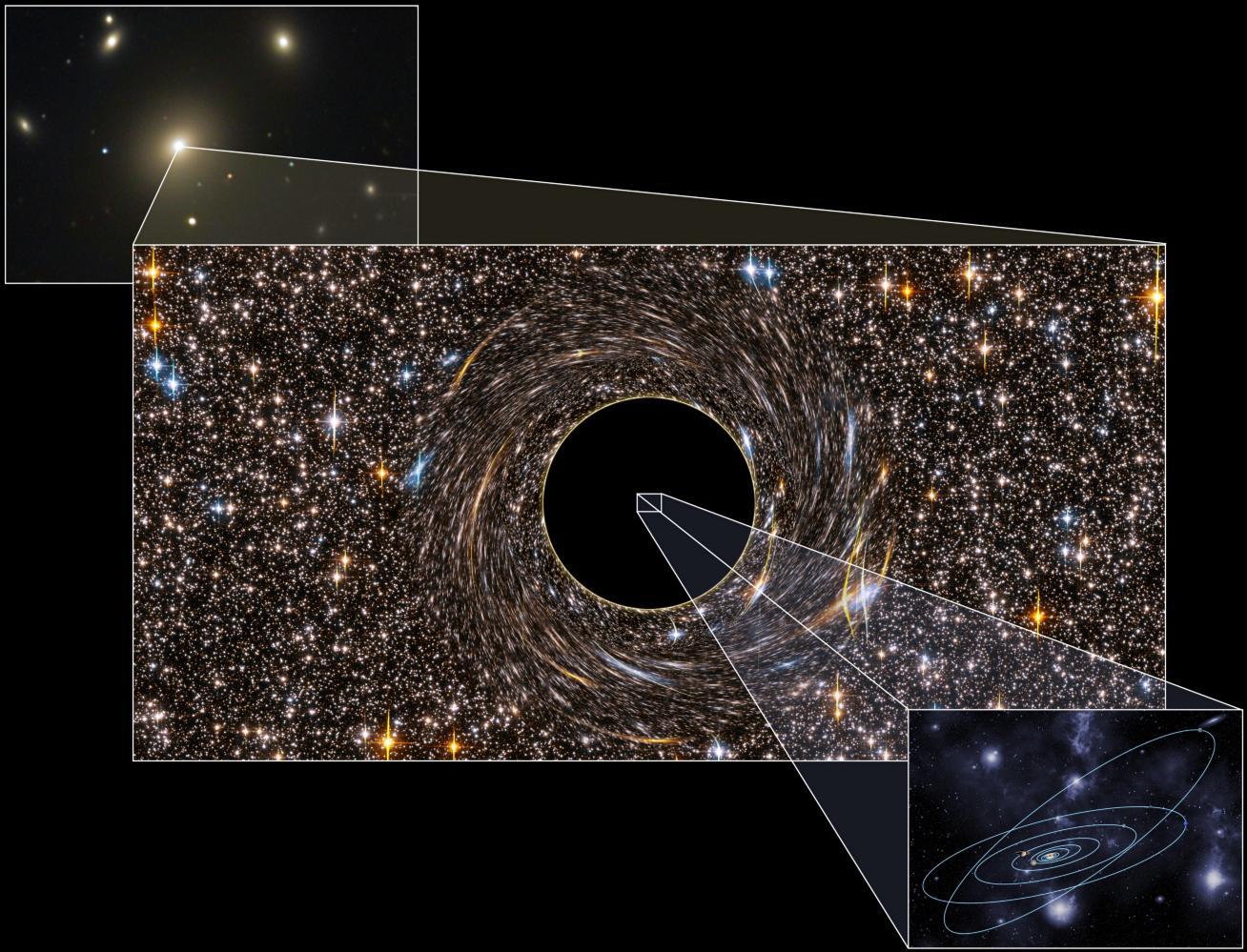
The speed of light in a vacuum is the general speed limit. In the universe there are places where huge masses are concentrated in such a small volume that nothing can escape from them. For a long time, black holes existed only in theory: it was assumed that it was impossible to fit such an enormous mass in a tiny volume of space. The situation was changed by several entertaining cosmic discoveries.
For example, absolutely dark parts of the cosmos were found with incredibly strong x-rays and radio emission. Or the stars torn apart: their substance leaked somewhere, but there was not a single supermassive star nearby. Finally, in the very center of our galaxy, stars orbit around an invisible object, the mass of which is assumed to be about 4 million solar masses. And not a ray of light.

Yes, this is a black hole! Einstein's general theory of relativity predicts that black holes should distort space, creating interesting optical effects (just look at the space behind the black hole).
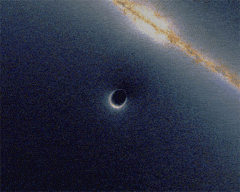
So, are such objects completely, completely black and nothing can fly away from them? The question is logical, but he remained unanswered for a very long time. The fact is that according to Einstein's theory, black holes were classical objects, that is, they had to be described by continuous space-time and have mass, charge and angular momentum. But we know that in our reality, matter and energy are inherently more discrete than continuous. Unfortunately, no one has managed to make friends with quantum mechanics with the general theory of relativity.
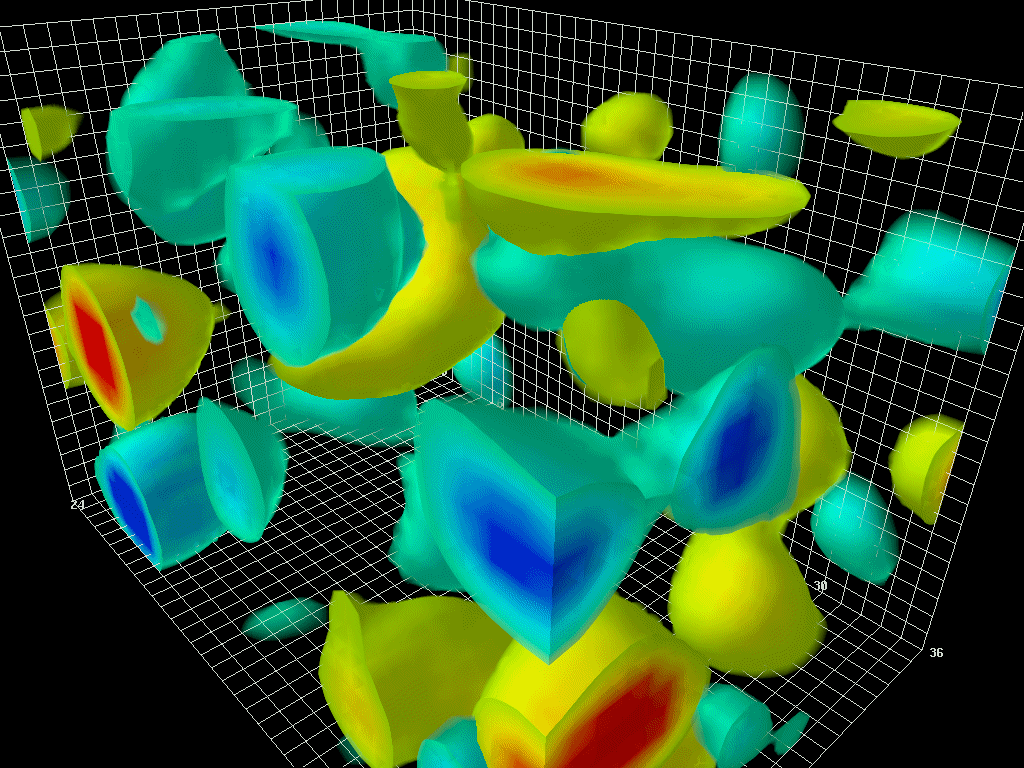
It seems that, by its nature, the universe is still discrete, but there is still no quantum theory of spacetime. And since there is no quantum theory of the theory, the only way to deal with black holes is to conduct calculations of our discrete Universe (here, quantum field theory is useful) in a curved space-time predicted by the general theory of relativity.

Not an easy task. Oh, I know: he was engaged in calculations. And he was not the first. The first was Stephen Hawking: in the mid-70s, he brought to mind a model of a discrete, inherently universe, existing in a curved space-time (and space was curved due to a black hole).
So. In a vacuum, quantum fluctuations, that is, the “particle + antiparticle” pairs are constantly born and disappear. At the same time, there is a horizon of events of a black hole - everything that fails into it will not be able to get back.

And what if the fluctuation appears right on the event horizon? Indeed, in this case, the antiparticle has a chance to fall into it, and the particle - to break out! According to the law of conservation of energy, a black hole is obliged to lose mass. The emission spectrum of a black hole is the same as that of an absolutely black body, and is determined by its mass and curvature of the surrounding space. (Quantum field theory will help calculate the spectrum correctly.) All other characteristics of a BH — life expectancy, evaporation time, energy loss rate — are determined by this phenomenon, which we all know as “Hawking radiation” .
In other words, black holes are not so black !
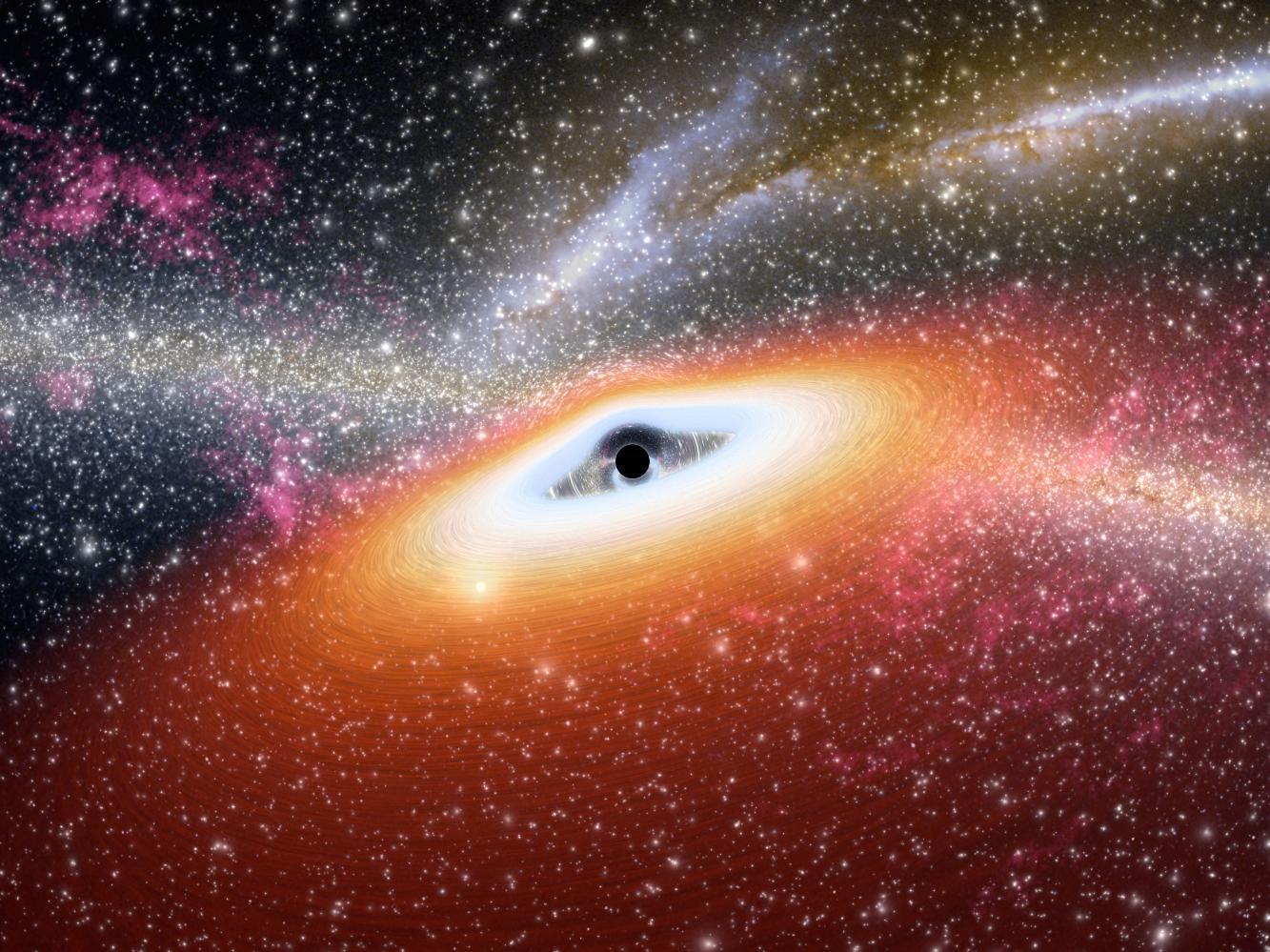
Suppose we do not have a complete all-embracing quantum theory of agony. So far we are doing quite well with the tools that we have: 1) the general theory of relativity for describing space and time, 2) quantum field theory with equations for working with matter and energy. Imagine yourself flying into a black hole. First, you will get into the accretion disk, then you will find an internal stable circular orbit, and behind it ... And behind it there should be nothing: the black hole absorbs everything and quickly hides it over its event horizon. Once inside, back you will not get out. Nothing gets out. In addition to Hawking radiation.
But a couple of years ago, one job made a lot of noise. It stated that when crossing the event horizon, the “fiery wall” of a black hole would incinerate you.

That work showed that the following three statements cannot be true at the same time.
- Hawking radiation is in a pure quantum state.
- The information that radiation contains is emitted near the event horizon, and at a microscopic distance from the event horizon a low-energy effective field theory acts.
- An observer falling into a black hole does not see anything unusual on the horizon of events.
This is an interesting paradox. Previously, we thought that Hawking radiation does not allow for loss of information, and the event horizon really exists and can not fly out of it, and also that when crossing the event horizon we will not encounter a “fiery wall” (that is, we will not see anything unusual - see statement number 3). Yet one of the three statements must be false. Which one exactly?
It is often said that physics moves forward thanks to such discoveries. But another thing is also true: the solution of this (or any other) paradox does not depend on the opinion of the most famous, important and respected scientist in this field. It depends solely on the scientific merits themselves.

Samuel L. Braunstein, Stefano Pirandola, Karol Zickovski. Perhaps these names are unknown to you. But last year, these physicists discovered something very interesting . Look here: Hawking radiation comes from a pair of quantum entangled particles, one of which falls into a black hole, and the other manages to escape to freedom. If you break their entanglement, measuring the properties of the escaped particle, on the horizon of events should arise the very fiery wall - a barrier of high-energy particles. Here you have a paradox: one particle falls inside, another flies out, and they are quantum entangled.
The most interesting thing is that the more entanglement on the horizon of a black hole’s events, the later the fire curtain descends. More confusion - more time. And in our Universe, as these scientists wrote, the entanglement on all horizons of events is maximum, which means that the time required for the appearance of a fire wall is infinite . Good conclusion. Suppose that he does not solve the paradox, but at least he gives us to understand that the problem is most likely not in statement number 3.
Then this is what happened:
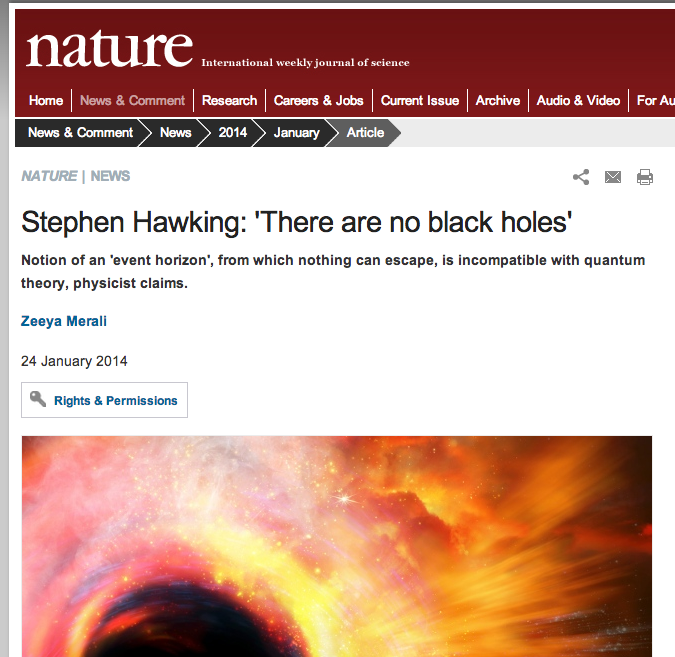
Hawking proposed to get rid of statement number 2. Just remove the concept of a classical event horizon. The reason, of course, may be in this, but the sentence, to put it mildly, is inconsistent and does not seem to be correct. The press unanimously picked up the idea, the headlines were full of the words “Black holes do not exist!”, But neither the discreteness of the Universe nor the existence of Hawking radiation does not cancel the concept of the event horizon.
Well, okay, since the scientists realized that the problem is not in statement number 3, maybe it is worth taking a closer look at statement number 1? It should be noted that speaking of the impossibility of losing information (preserving unitarity), we always mean radiation in a pure state. But what if Hawking radiation is not in a quantum-pure state? So we would avoid the loss of information!
There are two very interesting studies on this topic. Together with the above-mentioned work of Braunstein, Pirandola and Zichkovsky they seem to me the most important since the appearance of the paradox of research. And none of these works is related to Hawking or Süskind.
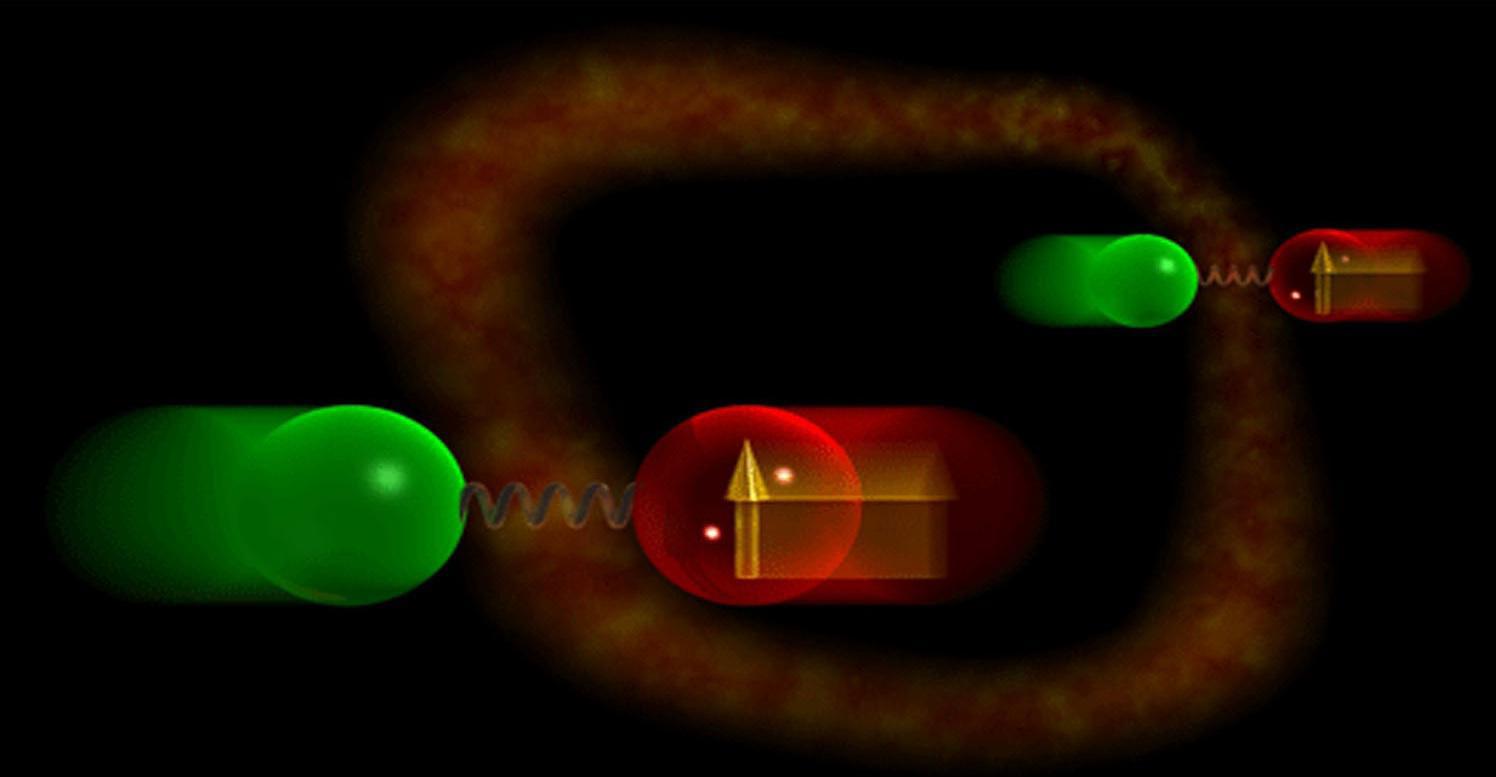
Imagine that you have two pairs of particles with the same moment and in both pairs one particle falls beyond the event horizon and the other escapes. If both failed particles are quantum-entangled with the escaped, information is lost, since unitarity is lost.
But the Verlinde brothers proved that unitarity can be preserved, since particles with the same moment are interchangeable: instead of two pairs of “one particle failed, the other flew out” we get the pairs “both failed” and “both flew out”, thereby depriving the particles of entanglement. * And more no quantum entangled particles on opposite sides of the event horizon! (And no fire wall.) Here is an idea! Um, but how is our paradox of the wall of fire resolved?

But more recently Sabina Hossenfelder published a paper that transformations that preserve information have some extremely interesting properties.
- The exchange for disentangling particles (so that information does not cross the event horizon) can be local, that is, it can occur between two points that are constantly connected with each other causally.
- Such local interaction can occur in one and only in one place right on the event horizon.
- Finally, the most important thing: between the states of radiation emitted at different times, there is no entanglement. (Entanglement would be necessary for a quantum-pure state.)
These three works show us that there is no fiery wall, and the paradox is solved if statement 1 is false, which speaks of Hawking’s pure radiation state.

You will not learn about all this from the media, because the title of such an article would be boring and it all seems difficult. And where are the big names? But this is true: Hawking radiation is not in a pure state, which means that there is no fiery wall, just as there is no paradox.
We still have a lot to learn and understand about black holes, event horizons and the behavior of quantum systems in a highly curved space-time. There is still a lot of interesting research. True, solving some points, they pose even more questions. But now we know for sure that we will not fry when we fall into a black hole. The cause of death will be "spaghettizing", not a fire!
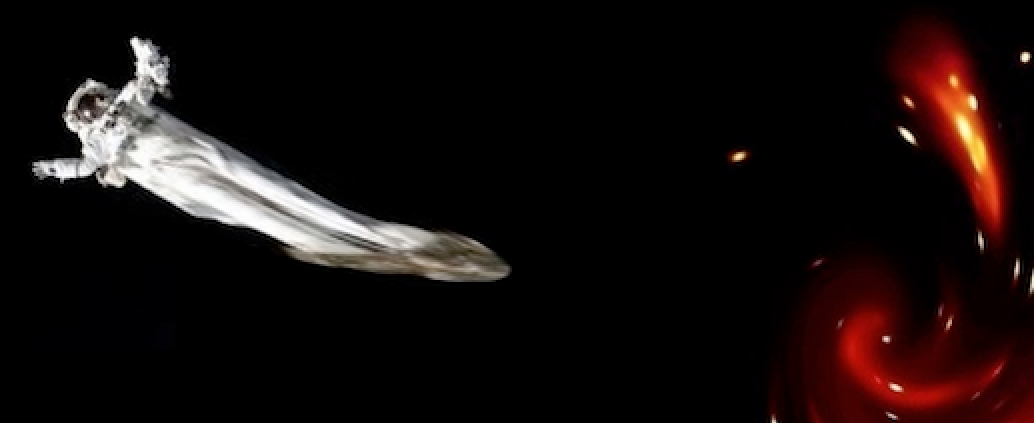
The paradox of the fiery wall is declared closed!
* Many thanks to Sabine Hossenfelder, the author of this work, for a detailed explanation of her theoretical calculations and many nuances on this topic. Her caution regarding the incorrect interpretation of Hawking's words can be found here .
Source: https://habr.com/ru/post/211693/
All Articles